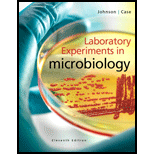
Concept explainers
Do all people who contact an infected individual acquire the disease?
To analyze:
If all the people who contact an infected individual acquire the disease.
Introduction:
Infectious diseases or infections are caused by pathogens like fungi, parasites, viruses or bacteria that can affect an organism indirectly or directly. Symptoms of disease depend on the type of organism responsible for causing the infection.
Explanation of Solution
Transmission of the disease is the process of spreading pathogen or causative agent between different hosts. A pathogen may spread between the host of the same species or different species. The mode of transmission of different pathogens varies depending on its life cycle and growth requirement. Transmission of the pathogen occurs through the following routes:
- Contact transmission: Some pathogens may infect a healthy individual by mere contact either direct or indirect, with the infected individual. Direct contact includes physical contact in the form of sexual intercourse, kiss, breastfeeding, during pregnancy or birth and through mucous. When a healthy individual acquires infection through sharing objects or medical equipment with the infected individual, it is termed as indirect contact transmission.
- Vehicle transmission: Vehicle transmission includes vehicles like air, water, and food, which when contaminated can transmit the pathogen into a healthy individual.
- Vector transmission: A biological or mechanical vector such as fly, is involved in the transmission of the pathogen. Mechanical vectors are involved in only transmitting a pathogen from one to another host whereas the biological vector itself acts as a host for the reproduction cycle of the pathogen, like in the case of malaria.
Therefore, the transmission of infection from an infected person to a healthy person depends on the pathogen and its mode of transmission. Hence, all people who come in contact with an infected individual do not acquire the disease.
Transmission of infection from an infected person to a healthy person depends on the pathogen and its mode of transmission. Hence, all people who come in contact with an infected individual do not acquire the disease.
Want to see more full solutions like this?
Chapter 39 Solutions
Laboratory Experiments in Microbiology (11th Edition)
- How much ATP will be produced during the following metabolic scenario: Aerobic respiration of a 5mM lipid solution that is made up of one glycerol and an 8-carbon fatty acid and 12-carbon fatty acid. Recall that when glycerol breaks down to Glyceraldehyde-3-phosphate it costs one ATP but your get an extra FADH2. Every two carbons of a fatty acid break down to one acetyl-CoA. (pathways will be provided on the exam) Units cannot be entered in this style of question but the units of your answer should be in mM of ATP.arrow_forwardWhen beta-lactamase was isolated from Staphylcoccus aureus and treated with a phosphorylating agent, only the active site, serine was phosphorylated. Additionally, the serine was found to constitute 0.35% (by weight) of this beta-lactamase enzyme. Using this, calculate the molecular weight of this enzyme and estimate the number of amino acids present in the polypeptide.arrow_forwardBased on your results from the Mannitol Salt Agar (MSA) media, which of your bacteria were mannitol fermenters and which were not mannitol fermenters?arrow_forward
- help tutor pleasearrow_forwardQ8. A researcher wants to study the effectiveness of a pill intended to reduce stomach heartburn in pregnant women. The researcher chooses randomly 400 women to participate in this experiment for 9 months of their pregnancy period. They all need to have the same diet. The researcher designs two groups of 200 participants: One group take the real medication intended to reduce heartburn, while the other group take placebo medication. In this study what are: Independent variable: Dependent variable: Control variable: Experimental group: " Control group: If the participants do not know who is consuming the real pills and who is consuming the sugar pills. This study is It happens that 40% of the participants do not find the treatment helpful and drop out after 6 months. The researcher throws out the data from subjects that drop out. What type of bias is there in this study? If the company who makes the medication funds this research, what type of bias might exist in this research work?arrow_forwardHow do I determine the inhertiance pattern from the pedigree diagram?arrow_forward
- 22. Which of the following mutant proteins is expected to have a dominant negative effect when over- expressed in normal cells? a. mutant PI3-kinase that lacks the SH2 domain but retains the kinase function b. mutant Grb2 protein that cannot bind to RTK c. mutant RTK that lacks the extracellular domain d. mutant PDK that has the PH domain but lost the kinase function e. all of the abovearrow_forwardWhat is the label ?arrow_forwardCan you described the image? Can you explain the question as well their answer and how to get to an answer to an problem like this?arrow_forward
 Medical Terminology for Health Professions, Spira...Health & NutritionISBN:9781305634350Author:Ann Ehrlich, Carol L. Schroeder, Laura Ehrlich, Katrina A. SchroederPublisher:Cengage Learning
Medical Terminology for Health Professions, Spira...Health & NutritionISBN:9781305634350Author:Ann Ehrlich, Carol L. Schroeder, Laura Ehrlich, Katrina A. SchroederPublisher:Cengage Learning Comprehensive Medical Assisting: Administrative a...NursingISBN:9781305964792Author:Wilburta Q. Lindh, Carol D. Tamparo, Barbara M. Dahl, Julie Morris, Cindy CorreaPublisher:Cengage Learning
Comprehensive Medical Assisting: Administrative a...NursingISBN:9781305964792Author:Wilburta Q. Lindh, Carol D. Tamparo, Barbara M. Dahl, Julie Morris, Cindy CorreaPublisher:Cengage Learning Human Heredity: Principles and Issues (MindTap Co...BiologyISBN:9781305251052Author:Michael CummingsPublisher:Cengage Learning
Human Heredity: Principles and Issues (MindTap Co...BiologyISBN:9781305251052Author:Michael CummingsPublisher:Cengage Learning





